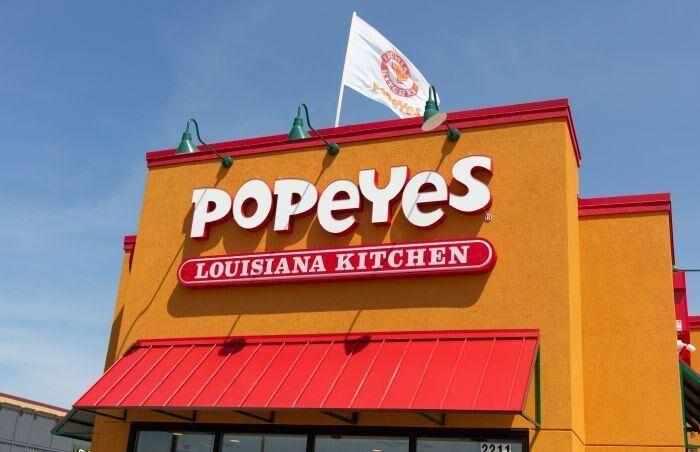Popeyes Bankruptcies: An In-Depth Exploration

Explore the history, reasons, and impacts of Popeyes’ bankruptcies, shedding light on the franchise’s journey through financial turmoil and recovery.
Introduction
Popeyes Louisiana Kitchen, a name synonymous with flavorful fried chicken, has experienced significant financial turbulence over the years. Despite its popularity and devoted customer base, Popeyes has faced two notable bankruptcies. Understanding the causes, impacts, Popeyes Bankruptcies: An In-Depth Explorationand recovery efforts surrounding these financial crises provides valuable insights into the fast-food industry and the resilience required to survive such challenges.
Popeyes: A Brief History
Popeyes was founded in 1972 by Al Copeland in New Orleans, Louisiana. Known for its spicy fried chicken and Southern-style menu, the chain quickly expanded beyond its local roots. By the early 1980s, Popeyes had established itself as a prominent player in the fast-food industry, boasting hundreds of locations across the United States and internationally.
The Rise of Popeyes
The 1980s and 1990s marked significant growth for Popeyes. The brand capitalized on its unique flavor profile, differentiating itself from competitors. Strategic marketing campaigns and menu innovations, such as the introduction of buttermilk biscuits and spicy chicken, helped Popeyes build a loyal customer base.
Initial Challenges and Financial Struggles
Despite its rapid growth, Popeyes encountered financial difficulties in the late 1980s. Overexpansion, high operating costs, and increasing competition strained the company’s finances. These challenges set the stage for the first major financial crisis.
First Bankruptcy Filing
In 1991, Popeyes filed for Chapter 11 bankruptcy protection. The filing allowed the company to restructure its debt and operations while continuing to operate its restaurants. This move was crucial in preventing a complete shutdown of the business.
Causes of the First Bankruptcy
Several factors contributed to Popeyes’ first bankruptcy:
- Overexpansion: Rapid growth led to overextended resources and management challenges.
- High Debt: Borrowing to fund expansion resulted in a significant debt burden.
- Operational Inefficiencies: Inconsistent quality and service issues affected customer satisfaction.
- Economic Downturn: The early 1990s recession impacted consumer spending on dining out.
Impact on Franchisees and Employees
The bankruptcy filing had a profound effect on franchisees and employees. Many franchise owners faced financial losses, and some were forced to close their locations. Employees experienced job insecurity and, in some cases, layoffs. Despite these challenges, Popeyes’ franchising model allowed for some flexibility in navigating the crisis.
Reorganization and Recovery
Post-bankruptcy, Popeyes implemented several measures to stabilize its operations. These included:
- Debt Restructuring: Negotiating with creditors to manage and reduce debt.
- Operational Improvements: Streamlining processes to enhance efficiency and customer service.
- Menu Simplification: Focusing on core products to improve consistency and quality.
Second Bankruptcy Filing
Despite the efforts to recover, Popeyes filed for bankruptcy again in 1998. This second filing highlighted ongoing challenges within the company and the broader fast-food market.
Reasons Behind the Second Bankruptcy
The second bankruptcy was driven by:
- Continued Debt Issues: Lingering debt from the first bankruptcy and additional borrowing.
- Market Competition: Intensified competition from other fast-food chains eroded market share.
- Management Missteps: Strategic errors and leadership changes disrupted stability.
- Economic Factors: Continued economic pressures affected consumer spending patterns.
Effect on Brand Reputation
The repeated bankruptcies took a toll on Popeyes’ brand reputation. Public perception of financial instability led to reduced customer confidence. However, the brand’s strong product offerings and loyal customer base provided a foundation for recovery.
Response from Competitors
Competitors seized the opportunity to capitalize on Popeyes’ struggles. Brands like KFC and Chick-fil-A intensified their marketing efforts and expanded their menu offerings to attract former Popeyes customers.
Investor Reactions and Market Impact
Investor confidence wavered in response to the bankruptcies. Stock prices fluctuated, and some investors divested their holdings. The market impact highlighted the volatility and risks associated with the fast-food industry.
Leadership Changes
During the financial crises, Popeyes underwent several leadership changes. New executives brought fresh perspectives and strategies aimed at steering the company back to stability.
Role of Parent Companies
Parent companies played a critical role in Popeyes’ recovery efforts. These entities provided financial support, strategic guidance, and operational expertise to help navigate the challenges.
Turnaround Strategies
Key strategies that aided Popeyes’ turnaround included:
- Focus on Core Competencies: Emphasizing the strengths of Popeyes’ unique menu offerings.
- Franchisee Support: Providing resources and support to franchise owners.
- Cost Management: Implementing cost-saving measures across operations.
Innovations and Menu Changes
In the aftermath of the bankruptcies, Popeyes introduced several innovations and menu changes. These included new product launches, healthier menu options, and limited-time promotions to attract customers.
Marketing and Rebranding Efforts
Marketing and rebranding efforts were crucial in restoring Popeyes’ image. Campaigns focused on the brand’s heritage, quality, and flavor, resonating with both loyal and new customers.
Customer Loyalty and Response
Customer loyalty played a significant role in Popeyes’ recovery. Despite financial troubles, many customers remained dedicated to the brand, driven by their love for its distinctive flavors.
Current Financial Health
Today, Popeyes is on a more stable financial footing. Strategic acquisitions, like the purchase by Restaurant Brands International in 2017, have provided additional resources and growth opportunities.
Lessons Learned from Popeyes’ Bankruptcies
The bankruptcies of Popeyes offer several key lessons:
- Importance of Sustainable Growth: Overexpansion without adequate support can lead to financial strain.
- Debt Management: Maintaining manageable debt levels is crucial for financial stability.
- Adaptability: The ability to adapt to market conditions and consumer preferences is essential for long-term success.
Comparisons with Other Fast-Food Chains
Comparing Popeyes’ experience with other fast-food chains reveals common challenges such as market competition, operational efficiency, and the impact of economic cycles. However, Popeyes’ unique flavor profile and strong brand identity have set it apart.
Industry Insights and Analysis
The fast-food industry is highly competitive and sensitive to economic fluctuations. Popeyes’ journey through bankruptcies highlights the need for robust financial planning, strong leadership, and a focus on core competencies.
Future Outlook for Popeyes
Looking ahead, Popeyes is well-positioned for continued growth. Ongoing innovation, international expansion, and strategic partnerships will likely drive the brand’s future success.
FAQs about Popeyes Bankruptcies
What led to Popeyes’ first bankruptcy? Popeyes’ first bankruptcy was primarily due to overexpansion, high debt, operational inefficiencies, and an economic downturn.
How did the second bankruptcy differ from the first? The second bankruptcy involved ongoing debt issues, intensified competition, management missteps, and continued economic pressures.



